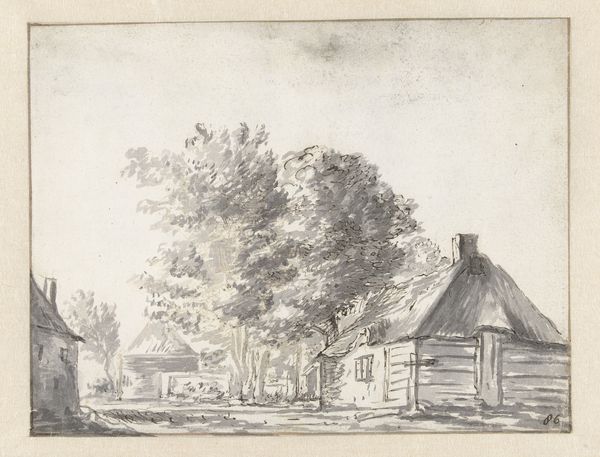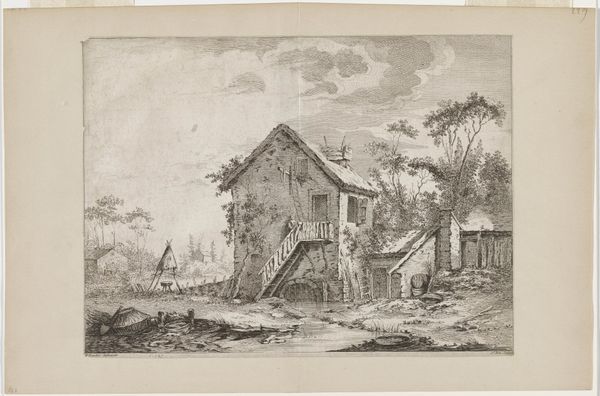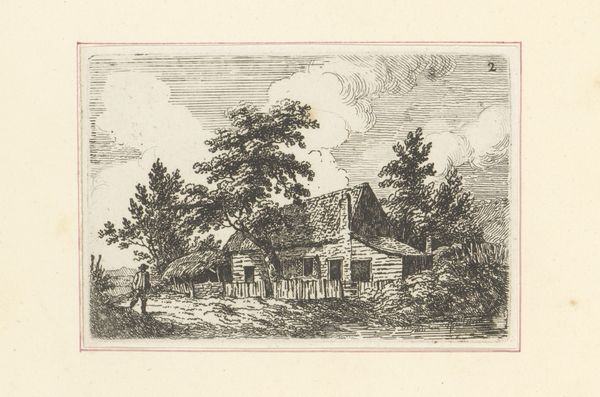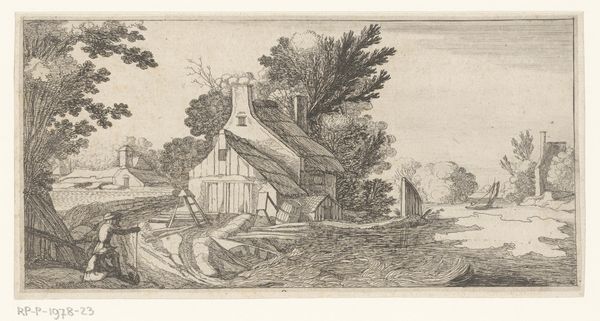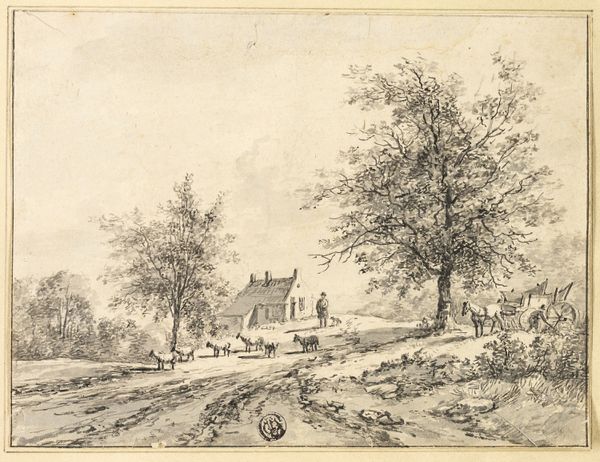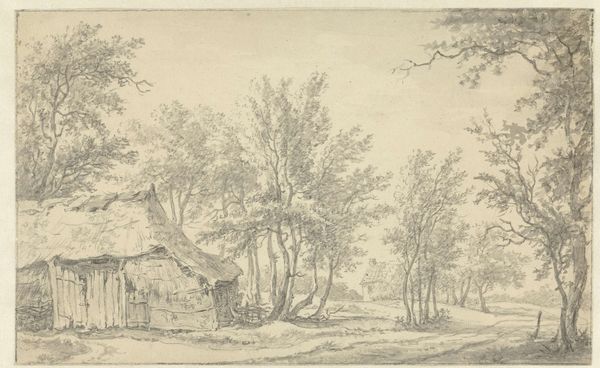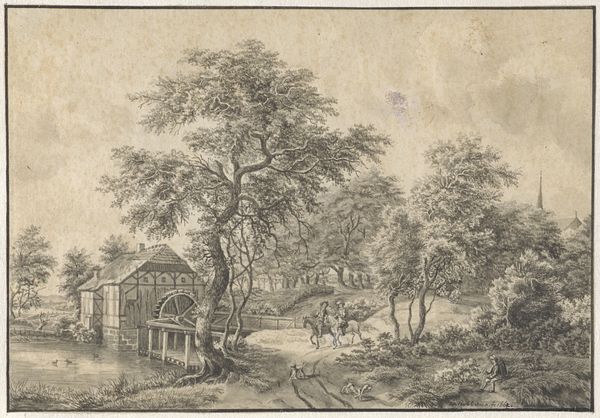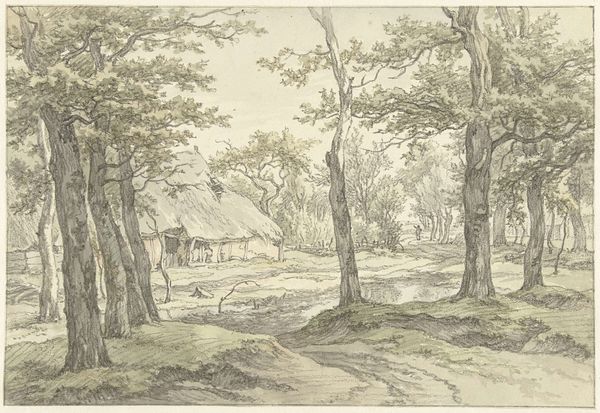
drawing, tempera, fresco, watercolor, pencil
#
drawing
#
tempera
#
dutch-golden-age
#
landscape
#
fresco
#
watercolor
#
pencil
#
watercolor
Dimensions: height 215 mm, width 343 mm
Copyright: Rijks Museum: Open Domain
Editor: This is "Landscape with a Watermill" by Lucas van Uden, created sometime between 1605 and 1673. It looks like it’s made with watercolor, pencil, and tempera, which gives it a really interesting texture. I'm curious about what you see in this seemingly idyllic landscape. Curator: I see a potent articulation of labor and resources. Notice how the watermill, a symbol of industry and societal development, is rendered with such detail. It speaks volumes about the relationship between humans and nature during the Dutch Golden Age, specifically the exploitation of natural resources for economic gain. Editor: So, you're focusing on the social context of the watermill itself? Curator: Precisely. We have to consider how materials like wood, stone, and water are being harnessed for production. Van Uden highlights not just the aesthetic beauty of the landscape, but subtly emphasizes the era's reliance on specific manufacturing techniques. It’s not just about a pretty landscape; it’s about understanding the societal factors that shape the production and reception of resources. What do you make of his technique, using watercolor, pencil, and tempera together? Editor: Well, to me the combination creates a delicate yet detailed scene. The light watercolor gives it a soft quality while the pencil provides a sharper edge, mostly around the watermill and surrounding trees. The tempera...maybe to make certain aspects pop out a bit more? Curator: Perhaps it draws our eye, but consider this: each material speaks to availability, expense, and craftmanship of the moment. Pencil sketches are quick studies, while watercolor demands a deliberate rendering. That combination signifies a new approach to landscape production. In a way, challenging how high art should be valued, based on craft or labor itself. Editor: That’s fascinating, seeing it in terms of material and the cultural and economic weight they carry. Thanks so much for sharing your insights. Curator: My pleasure, it is a joy to look at the painting from the process of it's production. It shifts my gaze to question, and reflect on, our current values on production.
Comments
No comments
Be the first to comment and join the conversation on the ultimate creative platform.
